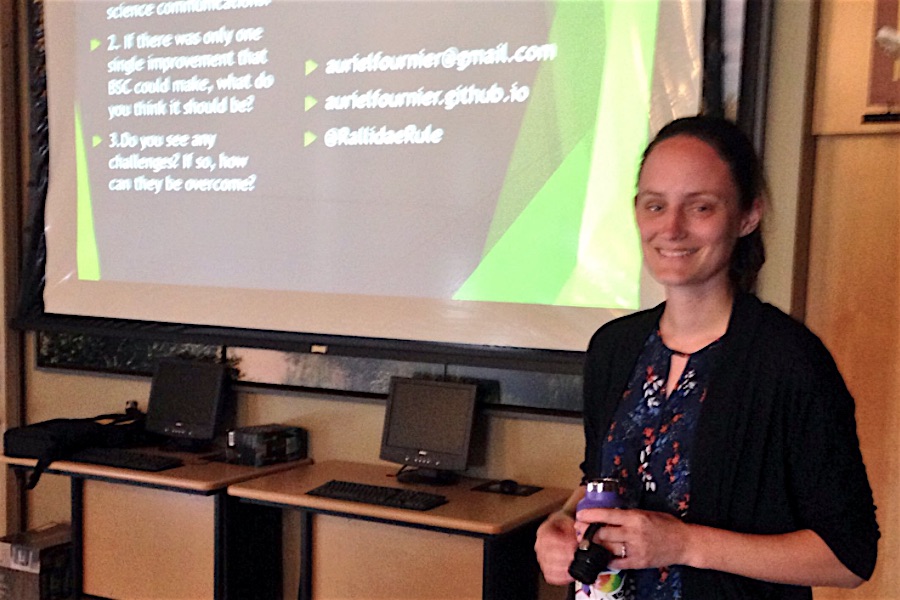
Here, Auriel Fournier, one of our newest recruits as an IBIS Associate Editor, explains her motivation as an ornithological communicator.
I knew about the BOU before I joined Twitter, but it wasn’t until I was active on Twitter, and started following the many ornithology accounts on there, that I was introduced to the breadth and depth of the things that the BOU does and offers to the ornithological community at large. I learned from the BOU’s Twitter account (@IBIS_journal) to share my work with a broad audience as I went along my ornithological journey as a PhD student.
Birds don’t know political boundaries, they cross hemispheres and oceans, and naturally the ornithological community works across those boundaries as well. Our community is becoming more and more connected online too; we talk to each other, ask each other’s advice and input, and we share our science with broader and broader audiences, making the case for ornithology, birds and their conservation.
I have formed many new friendships and collaborations through Twitter
I came to Twitter originally for community, to learn what it meant to be a scientist, and now, as a new post doc, and a new Associate Editor (AE) for IBIS, I feel like I have found my place – the overly excited rail researcher who strives to bring together strong quantitative and field techniques to answer conservation oriented challenges. I try to do this through my science, my communication and my work as an editor. I also use Twitter as a way of forming community for myself, seeking ideas, mentoring and support as well as broadening my scientific network. I have formed many new friendships and collaborations through Twitter, with scientists in the next state and on other continents.
I also use Twitter to create a place to talk about the issues I care about. I use it as a form of science communication, but not my only one, since science communication should always be done in the best way to address your audience. Naturally one of the issues I care about is birds, but I’m also passionate about diversity issues within science and the world, and increasing inclusion and equality. I try to put a human face on science, to show the messiness that goes into science and I strive to make science and the process relatable, to show that anyone can be a scientist and we need a wide set of skills to move conservation forward.
While I do my fair share of presentations for Audubon societies and other groups who already love birds, more and more I feel I’m preaching to the choir. If we want to have a public that cares about the natural world, including our precious birds, we have to go to them, to find common ground, and relate it back to the environment around them. Not everyone is going to care about birds, but they probably care about air quality, and the mental health of their children, both of which are improved with increased green space, especially in urban areas. Connecting with those who don’t already love birds isn’t always easy, and not everyone wants to engage with me, but I try to reach out to new groups, to groups that are overlooked by traditional outreach.

Being part of the ornithological community, through my science, my communication and my role as an Associate Editor with IBIS, I am seeking to use my time and talents to move ornithology forward, to do better, more robust and integrative science across larger and larger scales. Being a part of the wider BOU family has certainly helped me to make progress toward that goal.
And there’s more . . .
In coming weeks we’ll be posting blog articles explaining more about what we do and why we do it. In the meantime, read more about some of our community, about why they are BOU members and why and how they help us deliver our many activities.
More about the BOU
The BOU’s global ornithology community
What does it take to run the #1 ornithology journal?
What makes a BOU conference?
Funding ornithology – the work of the BOU Grants Committee
Listing into the future
BOU – we’re better when we’re together
Developing early-career researchers
Meet some of our members and those who help run the BOU
Blog with #theBOUblog
If you want to write about your research in #theBOUblog, then please see here.
Images
Auriel presenting from Twitter | @JodyAllair
Auriel Skyping as a scientist from Twitter | @RubioLisa



